#colatura
Text
Coloratura is a transmedia project that combines visual art and music by using wired paintbrushes and conductive canvas as electronic instruments to create and manipulate live music.

The Coloratura interface comprises 12 paintbrushes, each assigned to a unique color and corresponding musical note. As the brushes touch the canvas, color and sound emerge as one, creating a multi-sensory experience in real time. The end result of each interaction is an electronic music composition and a tangible, analog piece of art.
0 notes
Text
Live Concert Photography: New Colossus Festival and 18th Ward Brewing Presents Summer Sundays at 18th Ward Brewing 7/3/22 feat. Clone, Wetsuit, Colatura, Shallow Waves and Hexa
Live Concert Photography: New Colossus Festival and 18th Ward Brewing Presents Summer Sundays 7/3/22 @NewColossusFest @LorimerBeacon @18thwardbrewing @kaninerecords
@deadleafecho @wetsuit_band @colaturaband @thesyndotcom @WavesShallow
Co-founded by three New York music industry vets and longtime friends, Lorimer Beacon‘s founder and head Mike Bell, Kanine Records‘ founder and label head Lio Kanine and Kepler Events‘ and Dedstrange Records co-founder Steven Matrick, The New Colossus Festival over the course of the past couple of years have featured a few hundred handpicked, emerging indie bands and artists from across Canada,…

View On WordPress
#18th Ward Brewing#brooklyn#Bushwick Brooklyn NYC#Clone#Colatura#dark wave#Dead Leaf Echo#Dedstrange Records#Hexa#indie rock#indie synth pop#Kanine Records#Kepler Events#Live Concert#Live Concert Photography#Live Music#Live Music Photography#Lorimer Beacon#New Colossus Festival#noise punk#nyc#Photo Essay#Photography#Shallow Waves#shoegaze#synth pop#Toronto ON#Wetsuit#women who kick ass
0 notes
Text
Il Nastrone dell'Estate 2022 - “polaroid – un blog alla radio” – S21E40
Il Nastrone dell’Estate 2022 – “polaroid – un blog alla radio” – S21E40
La mattina del primo giorno d’agosto, svegliarsi in una casa che non è la tua, in una città che parla una lingua che non è la tua, una mattina di vacanza. E se anche in mezzo a una vacanza hai voglia di ascoltare un po’ di indiepop e indie rock, questa è una piccola playlist per l’estate, e in qualche modo parla anche di vacanze. Sta tutta in una C60, che per i viaggi è il formato ideale, e l’ha…

View On WordPress
#Alvvays#Baseball Gregg#Beach Bugs#blog#Bologna#Colatura#compilation#download#Enzo Baruffaldi#feed#Friko#Gee Tee#Ghost Pop#Gula Gången#High Sunn#Holiday Ghosts#Horsegirl#indie#indie rock#indiepop#Lande Hekt#Mila Moon#mixtape#Moon In June#mp3#nastrone#NEU#NEU Radio#new releases#news
1 note
·
View note
Photo
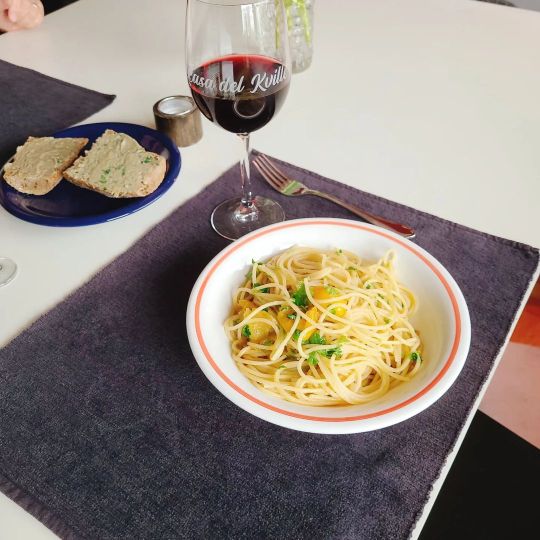
Spara detta receptet 🔽 Pasta med garum 👌 Eller Spaghetti con la Colatura di Alici... Colatura di Alici eller Garum är fermenterad ansjovis som använts till matlagning sedan romartiden 👍 Tänk dig då att redan med den umamiupplevelsen tillsätta musselpulver och sjöpungscreme 🤩 Jag lovar att det blev succe 😋 Dock har jag haft svårt att hitta just garum men den digitala saluhallen @mercatino.se hade det och mycket mer 👍 Kolla in länk i bio för erbjudanden och rabattkoder 😊 🛒 Ingredienser 1 msk salt 400 gram spagetti 8 matskedar extra virgin olivolja 4 vitlöksklyftor, krossade 1 burk gula körsbärstomater 4 matskedar Garum 1 citron, både saft och zest En näve färsk persilja, finhackad 1 tsk sjöpungscreme 1 msk musselpulver 🔪 Tillagning Koka spaghettin något kortare än anvisning. ⏲ Värm upp 1/3 av oljan på medelhög värme. När den är varm, tillsätt vitlöken, låt den bli lätt gyllene och och ta sedan bort vitlöken. ⏲ Tillsätt tomaterna och rör i ca 6 minuter. ⏲ Tillsätt garum, sjöpung samt citronsaft och stäng sedan av värmen. ⏲ Blanda i den kokta spaghettin 1 såsen och tillsätt sedan citronskal, persilja och återstående extra jungfruolja. 🛎 Servera omedelbart. 🍽 Om du uppskattar mina inlägg skulle jag bli superglad om du; Följer 👉 @the.real.cg.lagar.mat ✨ Gillar 👍 Sparar recept 🍝 Kommenterar 💬 Delar inlägg 🤩 Lägger till @the.real.cg.lagar.mat som favorit 🌟 #foodiesofsweden #pastamania #pastalove #italiancooking #pastagram #colatura #mat @mercatino.se #pastalover #italy #italianfood #ciboitaliano #mercatino.se #matinspo @musselfeed #hygge #colaturadialici #italiancuisine #mercatino @marinetaste #matobak_se @rabattkodsidan #italienskasmaker #saluhallpånätet #cucina @rabattkoder.sverige #saluhallenpånätet #primopiatto #pastarecipes #buonappetito @gratispandan #kockyoga #cucinaitaliana #pastarecipe #musselpulver #pasta (at Casa Del Kville) https://www.instagram.com/p/CetoUhfDtJ8/?igshid=NGJjMDIxMWI=
#foodiesofsweden#pastamania#pastalove#italiancooking#pastagram#colatura#mat#pastalover#italy#italianfood#ciboitaliano#mercatino#matinspo#hygge#colaturadialici#italiancuisine#matobak_se#italienskasmaker#saluhallpånätet#cucina#saluhallenpånätet#primopiatto#pastarecipes#buonappetito#kockyoga#cucinaitaliana#pastarecipe#musselpulver#pasta
1 note
·
View note
Text
Pokè, di Cefalo e Colatura di Alici di Cetara
Pokè, di Cefalo e Colatura di Alici di Cetara
Pokè, di Cefalo e Colatura di Alici di Cetara
Pokè, si pronuncia Poh-kay lett. “tagliare a pezzi” in hawaiano è un piatto statunitense a base di pesce crudo, servito come antipasto o come portata principale. È uno dei piatti principali della cucina nativa hawaiana.
Per San valentino ho deciso di realizzarne due versioni, “Mediterranee” una versione…
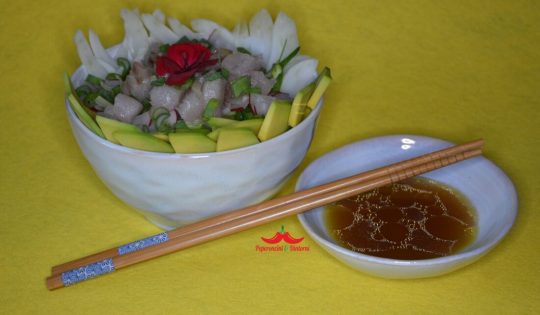
View On WordPress
0 notes
Text
Andare nei luoghi
è assai meglio che stare dietro
lo schermo a inseguire attenzioni
che non ci bastano mai.
L’unica cosa che conta
sono le attenzioni che diamo.
Non serve indugiare nella rissa
con le ombre, bisogna andare
nei rovi del mondo,
nei bar dei paesi più sperduti,
lì dove si può sentire
come lo sgomento sfiora la fratellanza,
come la solitudine
piomba di colpo nell’amicizia.
Chi può farlo lo faccia,
vada a salutare il muratore,
il pensionato,
il giovane che non è partito
e non sa dov’è rimasto.
Chi può cammini nelle strade
dove non entra
più neppure il vento,
faccia le scale
che fanno solo i gatti,
prenda i vicoli che sbucano
dentro altri vicoli.
Non c’è niente da salvare
in noi e fuori di noi,
siamo la colatura dell’assurdo,
ma uno sguardo, un buco nella pena
ancora può arrivare, ma dobbiamo
girare dove il mondo è muto
e disperato,
dove non c’è il fervore
dei commerci,
dove Dio ha smesso
di fare il mondo
e costruisce ragnatele.
Forse c’è anche altrove, ma io vedo
verità solo dove il mondo è inerme,
dove la luce cammina a piedi.
Non mi stanco mai di vedere paesi,
ma devono essere piccoli, nascosti,
paesi in cui il bar è anche negozio
di alimentari, dove il sindaco vive altrove,
dove non c’è il ronzio del nostro tempo,
ma un silenzio centrale, un abisso muto,
a volte quasi un po' beato.
Franco Arminio
8 notes
·
View notes
Text

Cellini e la sfida della fusione, forchette, pentole e padelle per realizzare il Perseo.
Il Perseo bronzeo di Benvenuto Cellini si trova in piazza della Signoria a Firenze da oltre 500 anni.
Era apparso dinnanzi agli occhi dei fiorentini sotto la Loggia dei Lanzi nel 1554 per volere di Cosimo I de' Medici, secondo duca di Firenze e primo Granduca di Toscana.
La fusione in bronzo fu per l'artista una sfida senza eguali.
Di norma, nell’antichità, le statue in bronzo venivano realizzate assemblando i diversi pezzi dell’opera fusi separatamente, per poi saldare il tutto e livellare i bordi tramite limatura.
L’uso della fusione di un oggetto in un unico blocco, portò gli artisti a sperimentare tale tecnica anche con statue di varie dimensioni e dalle posizioni complesse.
Il Perseo è l’esempio più celebre di questi esperimenti, costituita da soli tre pezzi: la testa di Medusa, il corpo dell’eroe e il corpo del mostro sotto i suoi piedi.
Il Cellini stesso, ci spiega, nella sua biografia, come la realizzazione lo abbia messo a dura prova per un concatenarsi di problematiche pratiche durante la fusione.
Prima le febbri dell’artista (causate dall’esalazione dei metalli), poi i fuochi della fornace quasi spenti a causa di un temporale, infine l’insufficienza di stagno della lega di fusione.
Per la statua di Perseo, alta più di 5 metri, furono necessari 18 quintali di metallo!
Quest’ultimo problema, portò l’artista a dover rimediare a tale mancanza con un’idea astuta, ovvero impiegò tutte le stoviglie della bottega ed anche alcune delle cucine di Palazzo Vecchio, completando così la colatura.
Cellini si vide costretto a sacrificare nella fusione anche il proprio personale servizio di vasellame e posateria!
Il risultato di tante peripezie fu una fusione quasi perfetta, tanto da stupire lo stesso Cellini; solo alcune parti, infatti, vennero rifatte (precisamente il piede destro e parte dello stinco) ed altre solo da sistemare e definire.
La statua, iniziata nel 1545, venne esposta in Piazza della Signoria nel 1554, dopo 9 anni di tentativi e migliorie.
Quest'opera resta ancora oggi un dono pubblico e magnifico, in bella vista di chiunque transiti liberamente, giorno e notte, nei pressi di Piazza della Signoria.
Perseo, Benvenuto Cellini, Loggia dei Lanzi, Firenze
3 notes
·
View notes
Photo



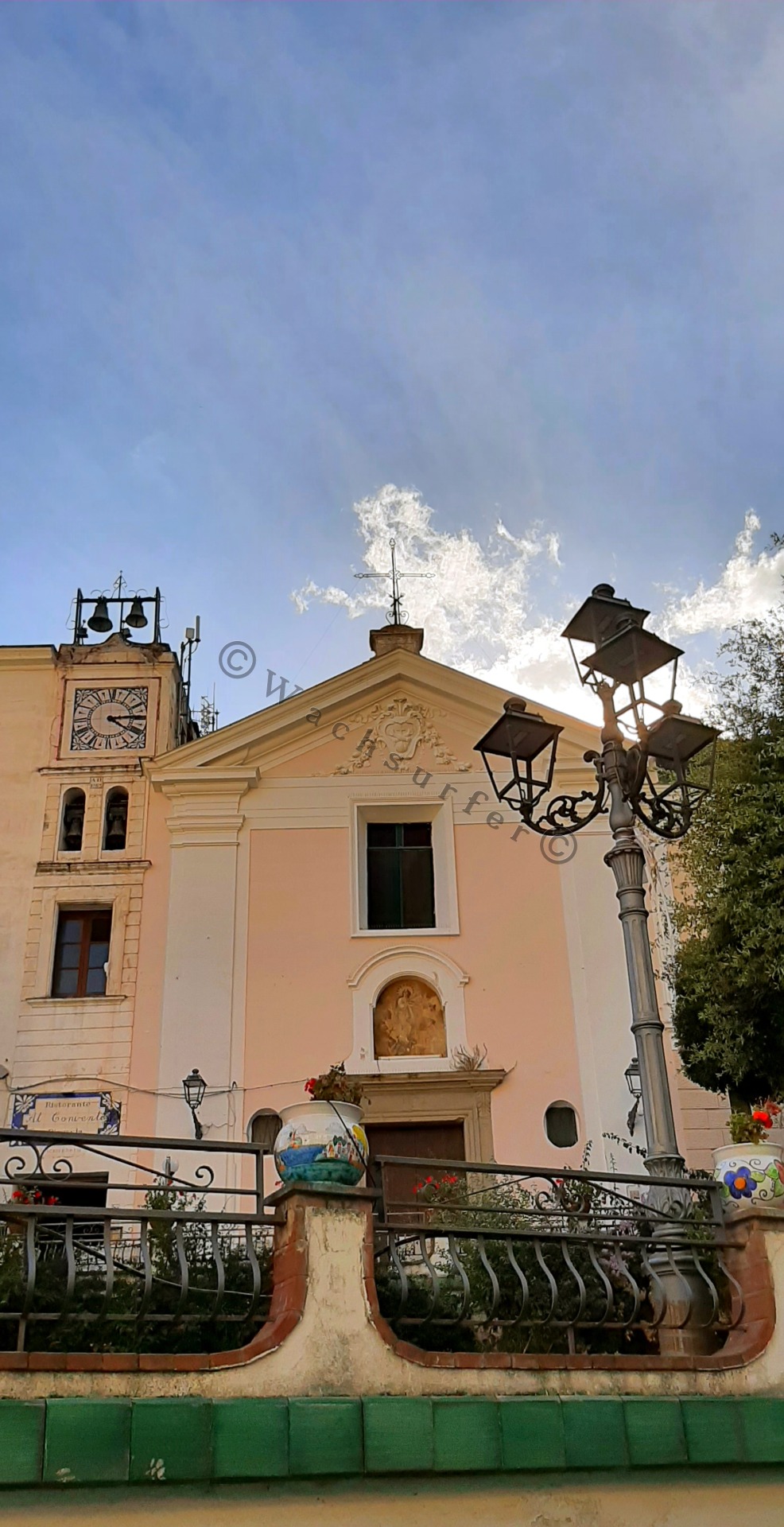

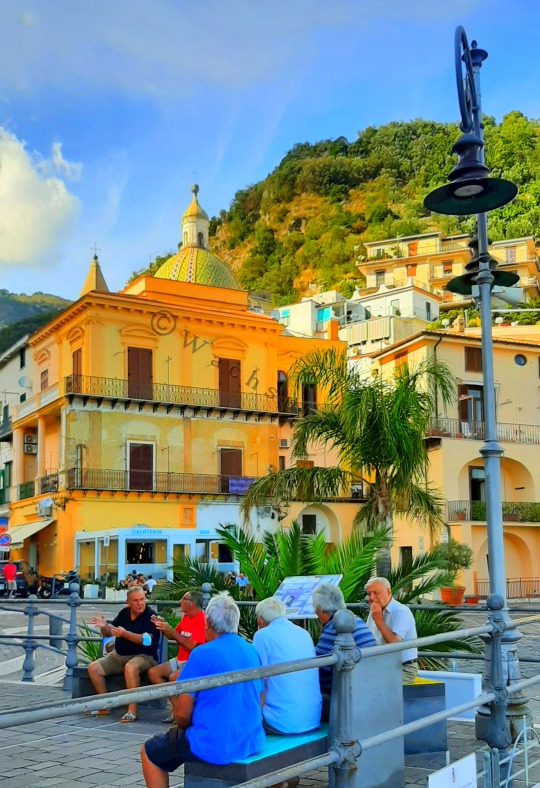
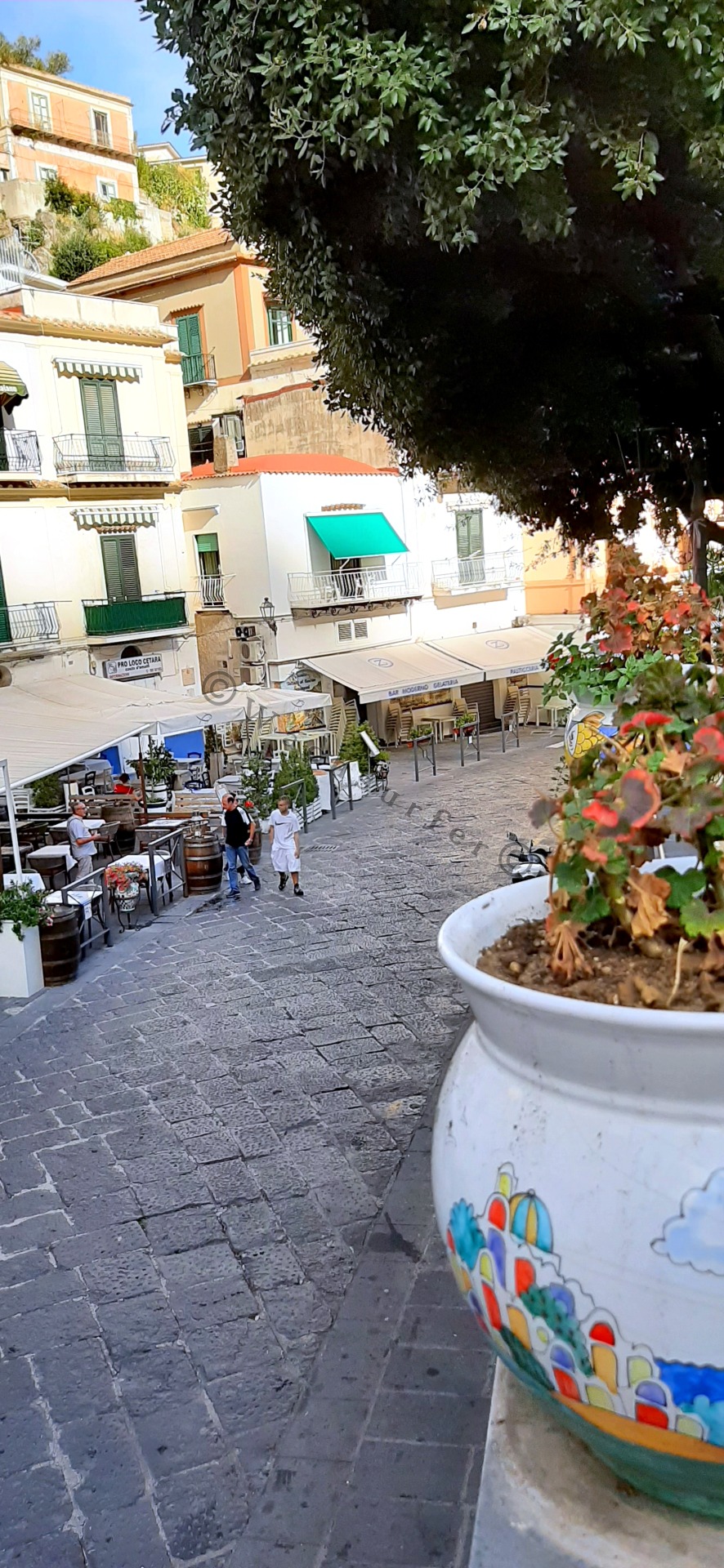
La bellissima Cetara sulla costa Amalfitana famosa per la produzione della colatura di alici.
21 notes
·
View notes
Text
shiv roy is so kids like us colatura coded send post
2 notes
·
View notes
Text

Come secondo un volatile, non un pappagallo o un cigno, ma un’anatra accompagnata da una salsa apiciana agrodolce a base di spezie e datteri (l’antenata della Worcester, una salsa dolce e salata che può accompagnare qualsiasi cosa, carne e pesce). I datteri sono i frutti più antichi coltivati dall’uomo, fondamentali perché molto energetici.
Petto di anatra con salsa apiciana “per anatre e gru”
La ricetta di questa salsa è tratta dal Libro VI del Re Coquinaria di Apicio, sezione dedicata alle salse per carni lesse dei volatili, nello specifico adatta ad anatre e gru. Non sono fornite le quantità degli ingredienti quindi bisogna fare un po’ di tentativi a proprio gusto
ALITER IN GRUEM VEL ANATEM ELIXAM
piper, ligusticum, cuminum, coriandrum siccum, mentam, origanum, nucleos, caryotam, liquamen, oleum, mel, sinape et vinum.
Ingredienti
petti di anatra
olio extra vergine di oliva
aglio, rosmarino e salvia
Per la salsa:
datteri
pinoli
vino
miele
senape
colatura di alici
pepe nero e coriandolo in grani, semi di cumino
origano e menta
olio extra vergine di oliva
Preparazione
Pestare nel mortaio le spezie (pepe nero, coriandolo, cumino, origano) e i pinoli. Snocciolare e sminuzzare grossolanamente i datteri e metterli sul fuoco col vino. Unire quindi il miele, la colatura di alici e i vari ingredienti un po’ alla volta in modo da bilanciarli. Far cuocere per una decina di minuti e setacciare.
Scaldare un paio di cucchiai d'olio in padella con uno spicchio di aglio ed erbe aromatiche fresche (rosmarino e salvia) e adagiarvi i petti di anatra con la pelle rivolta verso il basso affinché si sciolga il grasso. Cuocere per una decina di minuti, regolando di sale, dopodiché girare la carne e proseguire con la cottura per altri 8-10 minuti. Scaloppare i petti di anatra e servire nappando con la salsa preparata.
0 notes
Text
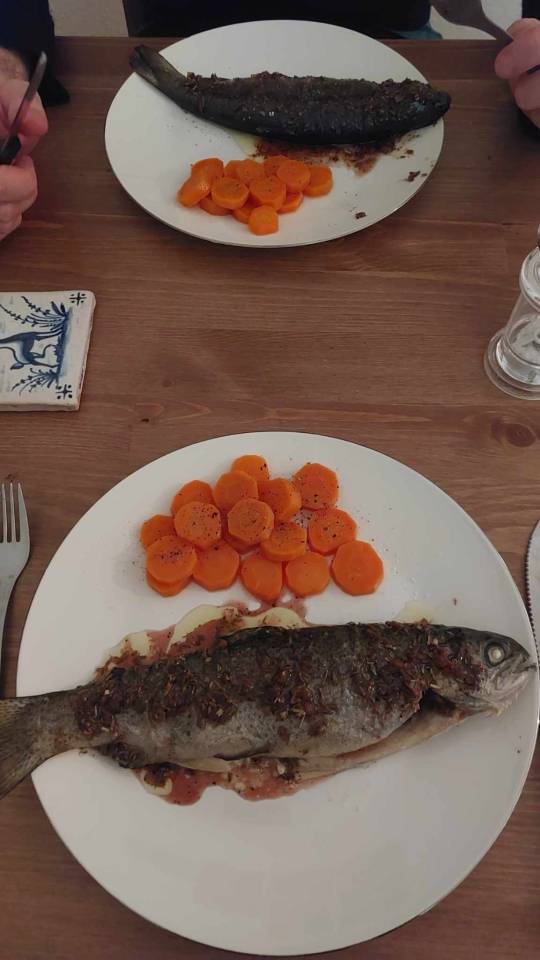
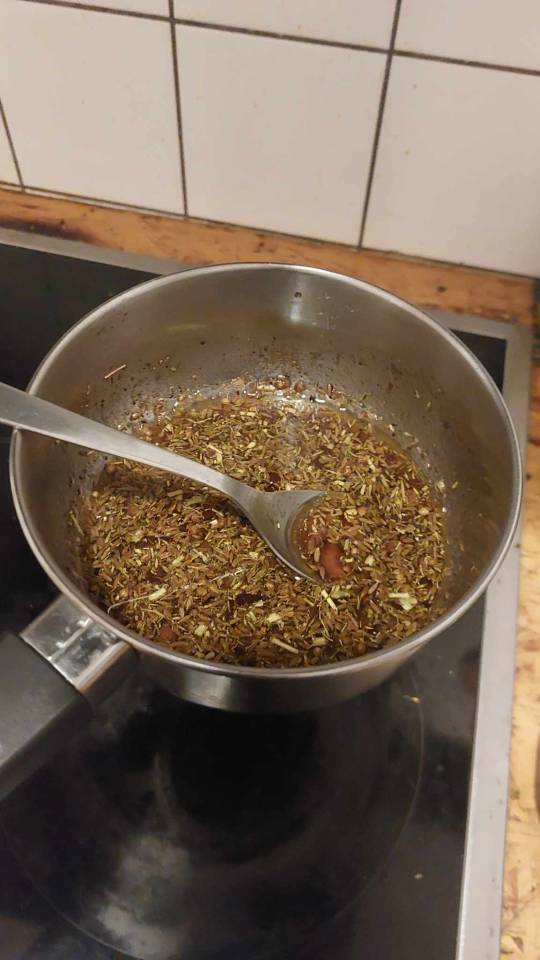
IUS DIABONTANON IN PISCE FRIXO (c. 5th century)
My first Roman dish, the historical dish from Tasting History I tried today was Ius Diabontanon In Pisce Frixo, known in English as Sauce with Herbs for Fried Fish. While this dish, likely from the 5th century De Re Coquinaria of Apicius (a collection of Roman dishes), is fairly specific in preparation, it does contain the much-loved Roman herb 'silphium', which is said to be extinct nowadays (or perhaps growing in little-known places in the wild). Max suggests replacing the silphium with asafoetida, an herb which might be in the same family. This is one of those dishes that Max seemed to really enjoy, so I just had to make it. See Max’s video on how to make it here or see the ingredients and process at the end of this post, sourced from the Youtube description of the video.
My experience making it:
I made a change or two from the modern recipe below. I left out the asafoetida completely, partially because Max said it smells bad to store, and partially because it's hard to find. Further, I intended on frying the fish like Max suggests, but my largest frying pan wasn't wide enough to fit the length of fish I had, so I baked the fish instead. I also made two fish instead of one, without halving the rest of the recipe (turns out there was still plenty of sauce left, so this wasn't really an issue). In terms of other specifications, I used white wine vinegar, dried oregano, dried rue, fish sauce in place of garum or Colatura di Alici, and I reduced my own grape juice instead of using defrutum or Mosto Cotto. The type of fish I used was rainbow trout.
Having never made a whole fish before, I was a bit nervous for some reason, but they were actually very easy to season and cooked great in the oven (200 C/290 F for 20 mins). The herbs smelled absolutely amazing while I was crushing them together, and the grape juice reduced well to form the base of the sauce. The recipe took me about 30 minutes to make, and the sauce was one of the fastest parts. It didn't combine super well and there seemed to be too many dry herbs in there (which you can probably see from my photos), but upon serving, it didn't make a difference too much and seemed to dress the fish quite nicely. I did add an extra tbsp of olive oil to thin it out a little, as the white wine vinegar was quite pungent, and I wasn't sure if the German type I had bought was perhaps stronger than the ones in Canada I'm used to (and which are probably closer to Max's). Overall, I was super happy with the result - the fancy, well-dressed fish looked like Max's and, more importantly, looked pretty Roman!
My experience tasting it:
I served the fish with some boiled carrots, partially because I thought the carrots might go nicely with the sauce. My husband and I began the interactive adventure of carving the bones out of our fish. They were tiny and I definitely got a few mouthfuls of bones! The fish was delightful though - cooked perfectly and complimented so well by the sweet and sour herb-wealthy sauce. The sauce had a few chunks of dates, which balanced out the salt and pepper on the fish really well. I was quite worried the sauce would be too sweet, as there were several very sweet ingredients (honey, dates, and reduced grape juice), but the vinegar and fish sauce must have done a lot of work to balance that out. Max mentions that Roman dishes have some flavour combinations that are unexpected and unlike many modern flavours, and I definitely agree. It was a unique sauce, but in the best way. I will definitely make this dish again, and I can imagine it going especially well with red meats or perhaps stir-fried veggies. If you end up making it, if you liked it, or if you changed anything from the original recipe, do let me know!
Links to harder-to-find ingredients:
Mosto Cotto
Colatura de Alici
Asafoetida
Cumin Seed
Coriander Seed
Dried Rue
Ius Diabontanon In Pisce Frixo original recipe (c. 5th century)
Sourced from De Re Coquinaria of Apicius
Sauce with herbs for Fried Fish:
Whatever fish you like, clean, salt, fry. Pound pepper, cumin, coriander seed, silphium root, oregano, rue, pound. Moisten with vinegar, add dates, honey, defrutum, oil, liquamen. Pour into a pot, let it boil, when heated pour over the fried fish. Sprinkle pepper and serve.
Modern Recipe
Based on De Re Coquinaria of Apicius and Max Miller’s version in his Tasting History video.
Ingredients:
1 whole fish or filet
salt for seasoning
½ tsp ground black pepper
½ tsp cumin seeds
½ tsp coriander seed
½ tsp optional asafoetida powder
1 tsp fresh oregano, add only half if you want to use dried
½ tsp dried rue, add twice the amount if you want to use fresh rue
3 tbsp red or white wine vinegar
3 minced dates
2 tbsp honey
1 tbsp Mosto Cotto or reduced grape juice (reduce by half)
2 tbsp olive oil, plus more for frying
1 tbsp fish sauce or Colatura di Alici
Method:
Clean and gut the fish, then make several diagonal slices on each side and season with salt.
Add 1/2 an inch of oil to a frying pan and heat it over medium high heat. Then set the fish in and fry on one side, undisturbed. Then flip and fry the other side. Once browned, place on a wire rack to drain.
For the sauce, grind and mix the herbs, then add the remaining ingredients.
Transfer sauce mixture to a small saucepan and heat over medium low heat until boiling.
Serve hot and sprinkle with pepper.
#fish#roman meals#ancient rome#roman history#cooking#max miller#tasting history#tasting history with max miller#sauces#de re coquinaria#apicius#5th century#Ius Diabontanon in Pisce Frixo#Keepers#Europe
1 note
·
View note
Text
My choir has been following the teachings of the Infinite Monkeys school of colatura singing.
0 notes
Text
The Art of Crafting Colatura di Alici
Welcome to our quaint little corner of the world, where we dive deep into the art of crafting Colatura di Alici. In this video, we’ll take you on a journey through the ancient tradition of creating this prized Italian delicacy. From the shimmering waters of the Amalfi Coast to the skilled hands of our artisans, you’ll witness the meticulous process that goes into each precious drop of…

View On WordPress
0 notes
Text

Crevettes au safran et paprika, colatura. Blettes avec oignon, ail, curcuma, cumin, sauce tomate maison. Riz basmati.
0 notes
Text
Unveiling a Symphony of Flavors: Magenta's Fine Dining Italian Menu
Where Bloomsbury meets King’s Cross, Magenta invites you to a culinary masterpiece, a journey that transcends borders and tantalizes your senses. In the heart of London, we've crafted an exquisite fine dining experience that marries the essence of contemporary Italian cuisine with the vibrancy of seasonal British ingredients. Let your taste buds embark on an adventure orchestrated by Executive Head Chef Manuele Bazzoni, a culinary virtuoso who brings the soul of Northern Italy to your plate, weaving a touch of theatrical flair into each dish.
As you savor each dish from our fine dining Italian menu, a touch of theatrical flair elevates the encounter, culminating in a symphony of flavors that defines the essence of both fine dining and our unwavering commitment to creating an unforgettable experience.
Culinary Artistry with a Dash of Magic
Step into Magenta and you'll find yourself amidst a tapestry of design and gastronomy. The ambiance, a brainchild of the renowned Henry Chebaane, interweaves the historic charm of towering arched windows with an indoor pergola adorned by a thousand fluttering butterflies. As you immerse yourself in this visual symphony, a carefully curated soundtrack adds to the enchantment, setting the stage for a dining experience like no other.
A Palate-Pleasing Overture
At Magenta, we believe in the power of food to create connections. For Italians, hospitality is synonymous with nourishment, a tradition we proudly embrace. As you peruse our menu, it's not just a list of dishes but a tribute to Italy's Northern regions and their distinctive flavors. Executive Head Chef Manuele Bazzoni, who has honed his craft in Michelin-starred kitchens both in London and Italy, brings you a menu that transcends mere sustenance.
Our culinary journey commences with a humble yet exquisite offering: earthy charcoal sourdough paired with the silky embrace of Sicilian olive oil. A tantalizing prelude to the symphony of flavors that follows.
A Dance of Flavors on Your Plate
Allow us to take you through the culinary marvels that await you at Magenta. The Magenta Lunch Menu, a captivating composition, unveils itself to the tune of seasonal freshness. Like a crescendo building up, each thoughtfully crafted dish from our fine dining Italian menu reveals its nuances, inviting you to savor every bite.
Antipasti:
Tuna Tartare with Buffalo mozzarella foam, pistachio, and ‘colatura d alici’.
Burrata accompanied by poached cherry, grilled peach, cherry tomato, and gremolata.
Chicken liver parfait, a delicate balance of flavors with pickled hazelnut and vin cotto.
Secondi:
Three milk ricotta and borage raviolo, accompanied by quail egg, tomato, and orange sauce.
Red Mullet, a delicate fish with Sauce vierge, Taggiasca olive tapenade, and anchovy.
Slow-roasted crispy pork belly, an indulgent delight served with pickled vegetables and Tropea onion.
Dolci:
Coconut Mousse with yellow peach salsa and blood peach sorbet, a dessert that's both refreshing and indulgent.
Strawberry “Rosa” with lychee and strawberry sorbet, a symphony of summer flavors.
Maldon sea salt and caramel ganache adorned with Piedmont hazelnut and banana ice cream, a sweet finale that lingers on your palate.
Rendezvous with Excellence: Magenta's Private Dining
For those seeking an intimate affair or a discreet business meeting, Magenta offers an exclusive private dining room perched above the restaurant. This carefully designed space echoes the same elegance as our main dining area, offering you an enclave of privacy to create cherished memories.
Curtain Call: A Culinary Overture to Remember
As your culinary journey at Magenta draws to a close, allow us to weave a poetic finale that captures the essence of a fine dining Italian menu. Our Michelin-endorsed fine dining experience marries the rich tapestry of Italian tradition with the vibrant hues of seasonal British ingredients. Executive Head Chef Manuele Bazzoni's creations are more than dishes; they are a symphony that resonates on your palate. Embrace the magic; savor the flavors. Join us at Magenta for a dining experience that transcends time and geography.
Reserve your table today and let the enchantment unfold: Book Now. Elevate your senses with the finesse of fine dining.
0 notes
Text
Il cibo è sempre più la voce più importante del budget della vacanza estiva in Italia, tanto che è diventato per molti la principale motivazione del viaggio.
Con un boom del turismo enogastronomico, che raggiungerà in questi mesi un valore di circa 15 miliardi di euro.
Cetara, in costiera amalfitana, rappresenta una meta gettonatissima, grazie all'attività di ristorazione legata alla pesca e al prodotto principe: la colatura di alici.
Il servizio del Tg1 andato in onda questa sera su Rai 1, con interventi di Giulio Giordano, produttore di colatura di alici di Cetara, Lucia Di Mauro, presidente associazione Colatura di Alici Dop Cetara e allo chef Luca Malafronte
0 notes